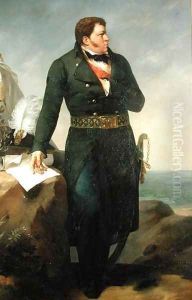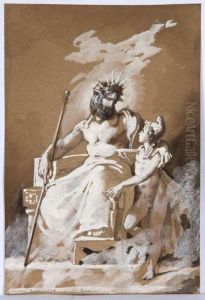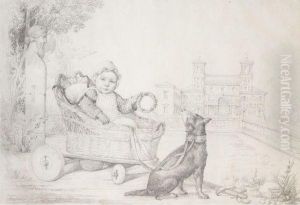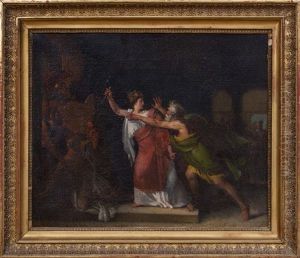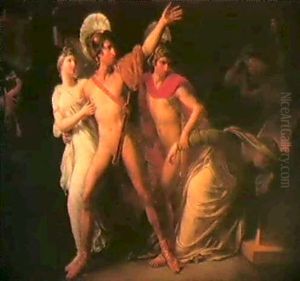Amable Paul Coutan Paintings
Amable Paul Coutan was a French painter who lived during the late 18th and early 19th centuries, a period that witnessed significant political, social, and artistic changes in France. Born in 1792, Coutan's lifetime spanned the tumultuous years of the French Revolution, the Napoleonic era, and the Restoration period.
Coutan's artistic career began in an era that was dominated by Neoclassicism, a movement that drew inspiration from the art and culture of ancient Greece and Rome. This style was prevalent in the aftermath of the French Revolution, as it was associated with the virtues of the republic and was used as a form of propaganda during the Napoleonic regime. Coutan, like many other artists of his time, would have been influenced by the neoclassical aesthetic and its emphasis on harmony, clarity, and strong linear forms.
Little is known about Coutan's training and early works, as he is not among the most widely documented artists of his time. However, his career likely involved participation in the official art exhibitions of his era, known as the Salon. The Salon was the most important art event in France and served as a showcase for artists to present their works to the public and to potential patrons.
Throughout his life, Coutan would have witnessed the transition from Neoclassicism to Romanticism, which began to take hold in the early 19th century. Romanticism was characterized by an emphasis on emotion, individualism, and the sublime in nature, marking a departure from the restrained and ordered qualities of Neoclassicism. It is possible that Coutan's later works were influenced by this shift in artistic taste.
Amable Paul Coutan's career was relatively short, as he died at the age of 45 in 1837. Due to the limited information available about his life and the scarcity of his works, Coutan's impact on the art world is not well documented, and he remains a relatively obscure figure in art history. His works, if they have survived, might be found in private collections or perhaps in regional museums in France, providing a glimpse into the artistic environment of his time.

